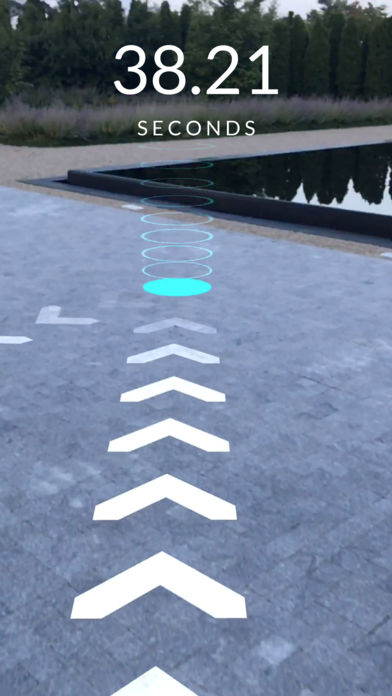Last Updated on July 5, 2022

With the rapid advancement of technology, Apple mobile device users may have recently noticed a surge in new app store categories focused on augmented reality (AR). Among these categories is a cutting-edge fitness program called AR Runner, designed by Semidome, Inc. This competitive augmented reality fitness app is the first of its kind for mobile devices, signaling the potential rise of AR in the fitness industry.
What is AR Runner?
AR Runner enhances fitness routines by overlaying virtual courses and checkpoints onto real-world open spaces, challenging users to complete timed runs. The app records performance, allowing users to compete with friends or global participants. This gamification of cardio workouts fosters motivation and engagement, much like popular mobile games. The app offers various modes, including solo runs, time challenges, and multiplayer races, catering to users with different fitness levels and preferences.
The Role of ARKit in AR Fitness App Development
Apple’s ARKit, introduced with iOS 11, empowers developers to integrate augmented reality into their applications seamlessly. ARKit offers advanced features like motion tracking, environmental understanding, and light estimation, making AR experiences more realistic and interactive. Similar to how HTML5 revolutionized cross-platform game development, ARKit simplifies the creation of AR experiences for iOS devices. This innovation is likely to inspire a wave of new AR fitness apps, enabling developers to design more immersive workout programs without the need for extensive resources.
Future of AR Fitness Apps
The potential for AR fitness applications extends beyond running. Future apps could include cycling routes with virtual terrains, yoga sessions with real-time posture correction, strength training with virtual coaches, and personalized fitness regimens based on user data. Competitive elements like multiplayer challenges, leaderboards, and social sharing could further enhance user engagement. Additionally, integration with wearable devices like Apple Watch could provide real-time metrics, enhancing the overall fitness experience.
Why AR Fitness Apps are the Future
Augmented reality fitness apps like AR Runner combine technology, health, and competition, providing users with engaging workout solutions. The immersive nature of AR makes fitness more exciting and accessible, encouraging more people to adopt healthier lifestyles. As ARKit continues to evolve, developers will create more sophisticated fitness programs, transforming how we approach fitness and health through mobile technology. The combination of AR, gamification, and personalized fitness opens up endless possibilities for the future of fitness technology.
Keywords: Augmented reality fitness apps, AR Runner, ARKit fitness development, mobile fitness technology, AR workout apps, Apple AR apps, iOS augmented reality, AR fitness trends, interactive workout apps, future of fitness technology, virtual fitness training, augmented reality exercise, AR fitness innovation, ARKit app development.






